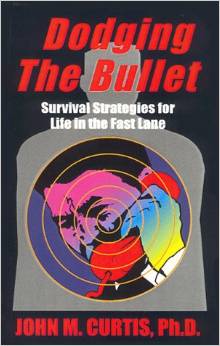After a 20-year guerrilla war with the U.S, the Taliban got almost everything they wanted, certainly returning to power in Kabul. What they didn’t get are some $10 billion in frozen Afghan assets held at the Federal Reserve Bank in York for safe-keeping. Because the Taliban toppled the U.S.-backed puppet government of 72-year-old Ashraf Ghani, it doesn’t mean they get all the goodies, unlike Iraq, where the U.S. got billions from Saddam Hussein’s the Bank of Baghdad, estimated at some $15 billion. Much of Baghada’s assets went missing under the guidance of L .Paul Bremer, former President George W. Bush civilian administrator of the new Iraq government. But now that the Taliban has control of Kabul, there’s no such luck, as much of Afghan’s assets were under safe keeping at the New York Fed. Getting those assets, the Taliban would have to comply generally accepted norms.
When the Taliban ruled from 1996 to 2001, they got much of their operating capital from the illicit opium trade, something they’re no doubt revisiting again. Without any real economy or means of generating capital, the Taliban is at the mercy of U.S. adversaries, Russia and China, more than willing to offer some loan guarantees in exchange for a seat at the table. “It’s all but impossible, to tell you the truth, both practically and legally,” said Robert Hockett, Cornell University professor of law and finance. “It’s basically legally impossible because [the Taliban is] not recognized as a legitimate government by the United States. And the United States has the legal authority to freeze assets that were held by a government when that government is replaced by a non-government,” Hockett said. But conquering another nation does give sovereignty to the government.
When Russia seized Crimea March 1, 2014, there were no assets from any bank to spread around, leaving the Russian Federation that has copious revenue streams for its energy industry. Yet the Taliban somehow managed to survive between 1996 and 2001, largely by squeezing warlords connected to the lucrative opium trade. Holding the purse strings over the Taliban, the U.S. can really call the shots, in terms of influencing how the government complies with human and civil rights. If Aghan’s file suit against the Taliban in federal court, the U.S. holds the assets needed to resolve any pending litigation, likely to cost billions. “Because only if they were to cease being the Taliban, might they come to be viewed as a legitimate government of Afghanistan,“ Hockett said, showing the kind of economic leverage the U.S. holds. Taliban could seize more U.S. hostages demanding a return of their assets.
Once the Taliban sets up government with 52-year-old Mullah Abdul Ghani Baradar at the helm, time will tell whether the Taliban reverts back to the days of Mullah Mohammed Omar, when public beheadings, amputations and torture were commonplace. If the U.S. gets any inkling that the Taliban seeks serious reforms when it comes to human and civil rights, then 58-year-old Secretary of State Antony Blinken could start dialogue about using frozen Afghan assets. “There’s no sort of time, date or limit on how long that can be. It could literally be for hundreds of years, legally speaking,” Hockett said, not believing the U.S. will want to negotiate anything with the Taliban government. When it comes to holding global assets, U.S. friends-and-foes alike, know that there’s no safer place to keep assets than in the New York Federal Reserve Bank, despite possible limitations.
Baradar could get more combative as time goes on, continuing to take more U.S. hostages with whom to negotiate a return of frozen assets. “I don’t think there’s any chance at all that the Taliban gets this money back through any kind of legal argumentation or legal process,” Hockett said, not considering what could happen politically. If the Taliban takes U.S. hostages demanding a release of frozen assets, things could change rapidly. But as long as the U.S. holds Afghan assets, there’s little the Taliban can do to force the U.S. to release the frozen assets other than file suit in the International Court of Arbitration in the Hague. But without some assurance that the Taliban recognizes and implements international norms on human and civil rights, it’s doubtful they’d get a favorable ruling. State and Defense Department officials should be on high alert especially approaching Sept. 11 20-year anniversary.
Taliban officials have little leverage other than seizing hostages to demand the U.S. release frozen assets held at the New York Federal Reserve Bank. Whether those assets are used to pay reparations to Afghan refugees filing suit is anyone’s guess. Any Afghan citizen choosing to leave Afghanistan under Taliban rule would have to show that the they were forced to leave, not that they assumed life under the Taliban would be intolerable. No international court would rule in favor of a plaintiff arguing they had to leave because they didn’t want to live under Sharia law. When it comes to frozen assets held at the New York Fed, the Taliban can argue that it belongs to the Afghan people they now represent. Whether the U.S. or EU acknowledge the Taliban government or not, they are the commanding legal authority in Afghanistan. Whether they won sovereign by force or by vote, the Taliban now rules Afganistan.



